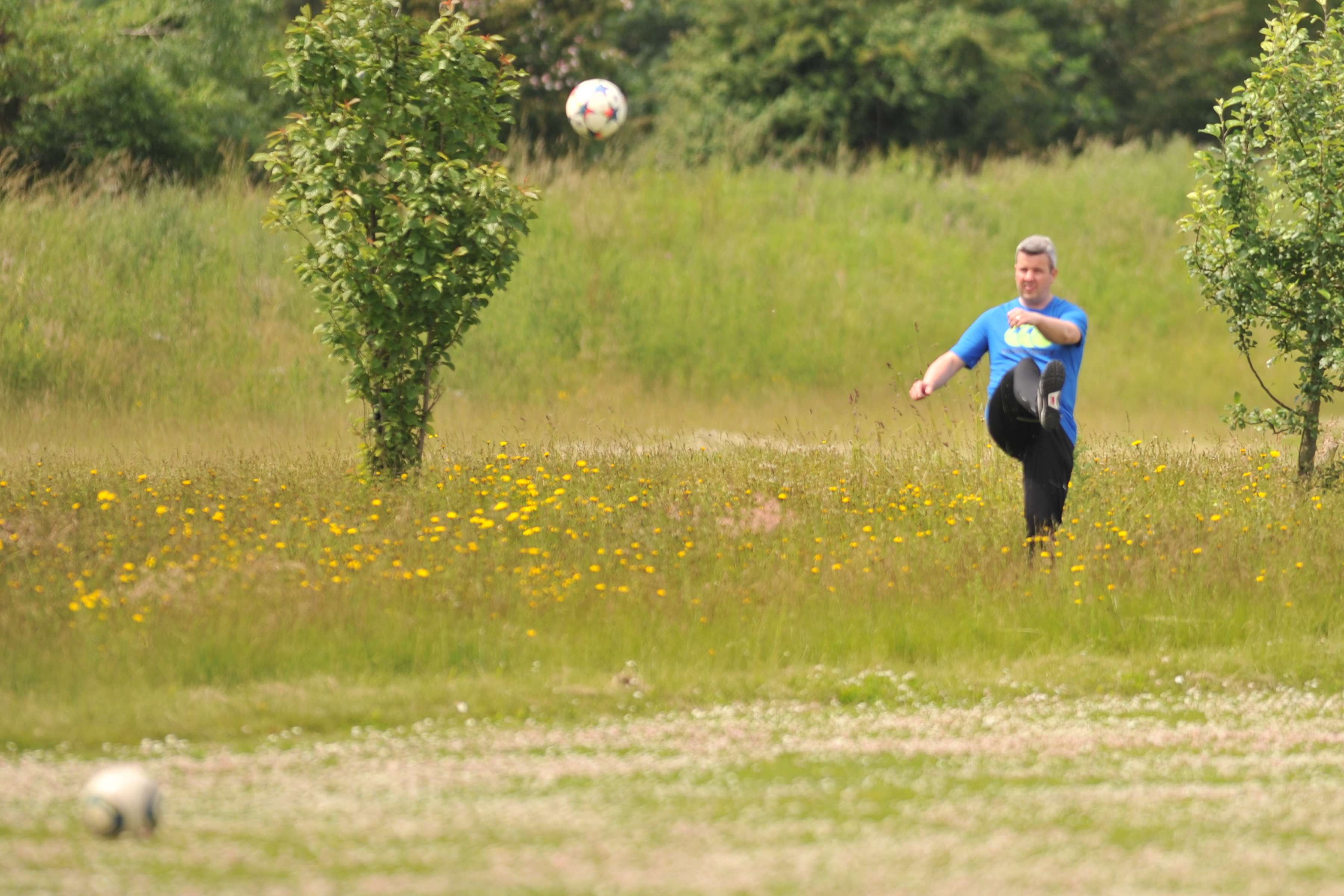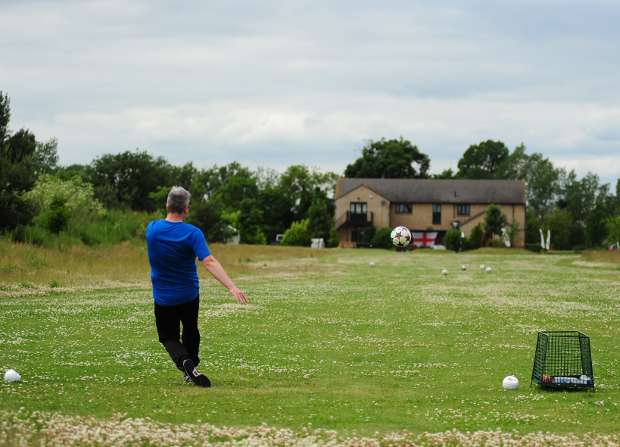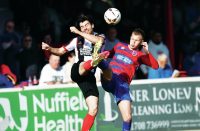Pic: Mike Capps
PRESSURE can have a strange effect. Let me paint a picture.
On my stag do, we took in the obligatory round of golf somewhere in the middle of Kent. There was one particular hole, where the tee was bang in front of an outside terrace.
As it happens, we were playing on a lovely sunny day and, when we arrived at the tenth, it was packed.
We may have been nine holes in, but there was a collective groan from the group. Hackers like us don’t need an audience.
I stepped up first and drove the green. The fact it was the green we’d just come from and that the ball nearly went through my legs to get there illustrates the type of duff we’re talking about.
So, when I turned up at Footgolf HQ in Cambridge, getting introduced to players who have just finished fourth and fifth in the recent World Cup only increased the chances of total embarrassment.
Podium
Fortunately, my five playing partners are more than welcoming and take the lead off the first tee, before watching me slice into the rough.
Paul Oliver is National Tournament Director for UK Footgolf and narrowly missed out on the top three in Argentina.
Former Tring and Berkhamstead keeper Ben Clarke finished just behind him and ex-Histon striker Ben Murray – brother of another former Stute, Antonio – was their first ever podium finisher.
Cambridgeshire county captain Daniel Clemments and Cambridgeshire ambassador Andy Peck completed my helpful guides. And I needed them.
As a (long) ball-playing centre half in my Fleet Spurs A days, it was tempting to think a big hoof up the fairway would be the path to success. I quickly realised it wasn’t so simple. It’s much more of a thinker than that.

Weight of pass is important in football, but how often do you try to roll the ball up to a non-moving target? While everyone else leaves their football short of the hole on a green with a nasty slope, mine just keeps rolling on by. Then past the hole again on the way back down.
Holland is largely credited with being the birthplace of the game in 2008 but the origins may have been even earlier. Paul – also a golf pro – heard about it in 2012 when he got a phone call asking if someone could come and dig some big holes in his course.
In recent years it’s exploded. More than 200 players from across the globe played in the World Cup. This country now has 200 courses, while 543 registered players have competed in competitions this year, with an estimate of 30,000 people playing weekly across the UK.
There are regional events every week – men’s, ladies’, U12s, U16s and Over-45s – and regular nationals. There is even a Ryder Cup-style event called the Jansen Footgolf Cup.
Cambridge will host the UK Open in August – Paolo Di Canio is due to make an appearance – with more than 200 players set to take part.

It explains the changes that are being made to this course. Fairways have been narrowed and new trenches are being dug.
Watching the experienced footgolfers soon has me changing my approach. Toe-punting the ball into the hole is particularly effective, side-footing from the tee gets me in better positions and, when finally out of the long grass, I even manage to sink one from distance – though not from as far as Ben and Daniel.
It’s hoped prize funds will grow to more than £30,000. Rivalries are building across the world and the standard of player is rocketing. Paul even has a hole in his garden to practise. Just like in regular golf, that’s exactly what I need. I’ll be back.





















